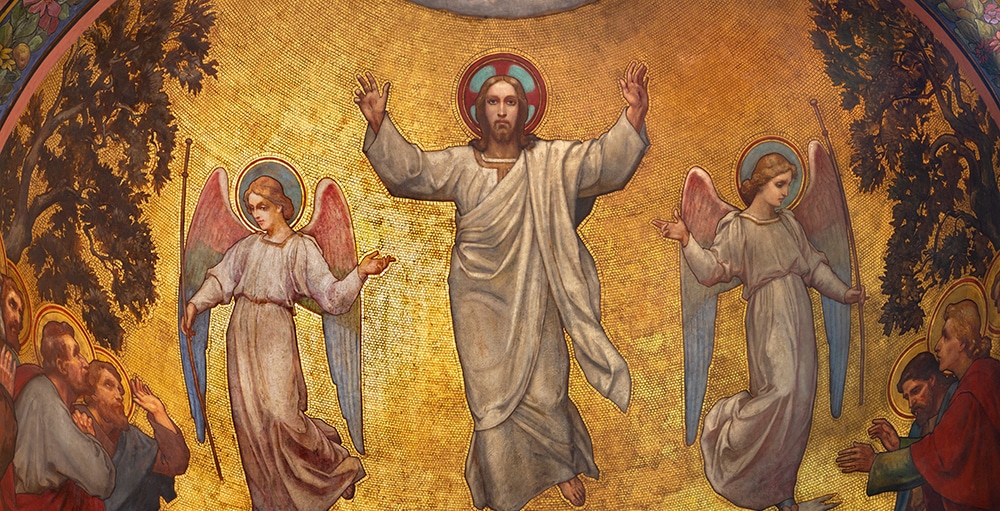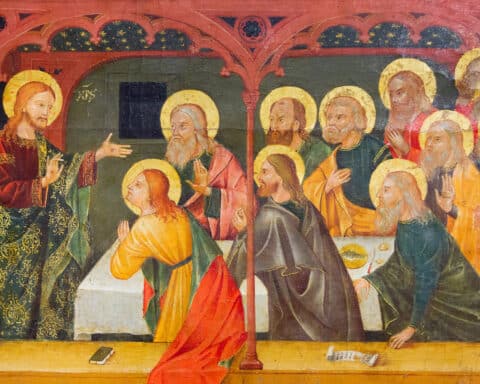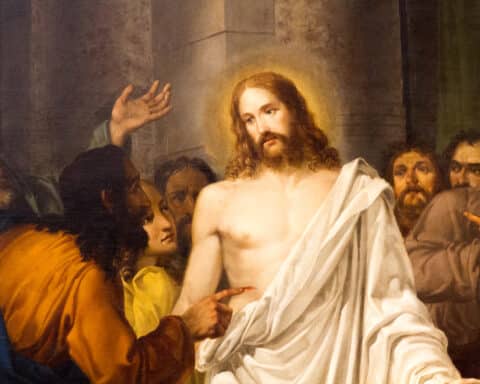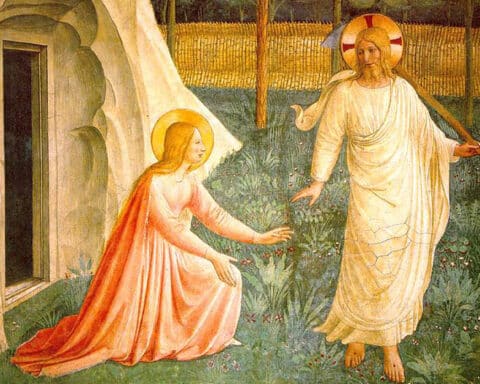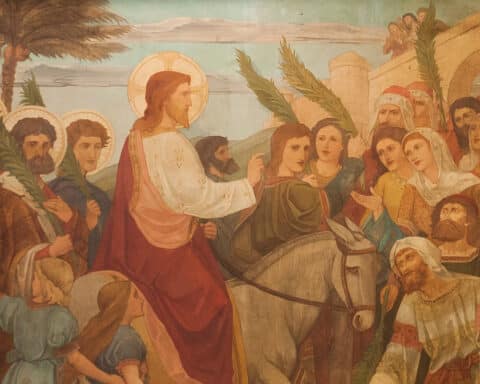
This presence is important to the Catholic imagination. And yet, the feast of the Ascension underlines that this presence is made possible because of distance.
The Ascension of the Lord must be understood aright. Jesus Christ is not sitting on some cloud in the heavens, doing his best to avoid air traffic. Instead, his Ascension is a departure from a certain kind of physical presence. He is not here in the same way that he was present to the disciples on the Mount of Olives on that first Ascension Thursday.
Our Lord has gone back to the Father. He did not leave behind his body as a remnant. Instead, his body exists in the very presence of the Father, entering the life of God.
Christ is the head who has ascended to the Father. And we, as the Body of Christ, are destined to ascend with him. Our vocation is to follow Christ not through the dusty streets of Jerusalem but to the right hand of the Father, to the blissful delight of seeing God face-to-face.
| May 24 – The Ascension of the Lord |
|---|
|
Acts 1:1-11
Ps 47:2-3, 6-7, 8-9
Eph 1:17-23
Mt 28:16-20
|
Christ’s distance from us is part of the very way that God has chosen to save the human family. Of course, God is always with us, dwelling among us through the power of the Spirit. But on Ascension Thursday (or Sunday for most of the United States), we acknowledge the divine pedagogy of distance.
After all, when we hear the proclaimed word, we do not see the face of Christ. Eucharistic presence is not immediately available to the senses. The body of Christ looks like bread. The blood of Christ looks like wine. As St. Thomas Aquinas notes in his Eucharistic hymnody, where the senses fail, faith alone suffices.
There is distance.
And as we have learned over this quarantine, spent away from at least some of the presences so important to Catholic life, distance allows for desire.
Paul’s Letter to the Ephesians fans the flames of this desire for us. We cannot yet see the fullness of what God has accomplished in Christ. The Word made flesh is subject now to no power! Jesus Christ, the God-man, fully human and fully divine, reigns over creation. He reigns over the Church.
It is our destiny to reign with him, to dwell alongside Our Lord, in that most blessed vision of heaven itself.
We do not have to wait for heaven to begin to see some of this blessed vision. We can hope for it. Hope is a kind of seeing. It is seeing that which is distant. We hope for an end to the quarantine, we hope for a recovery of the economy, we hope for a peace that reigns over the world.
And we hope to see our Lord face to face. We desire it! And this desire, dear friends, is what brings us into the presence of the Lord. The more we desire it, the more we see it.
In the Mass, we lift up our hearts to God. The heart is the seat of our affections, our desires, our memory, imagination, and will. It is our very self.
So on this feast of the Ascension, lift up your heart to God. Lift your whole self up, covering the distance between God and humanity through the swift flight of love.
Timothy P. O’Malley, Ph.D., is the director of education at the McGrath Institute for Church Life at the University of Notre Dame.

